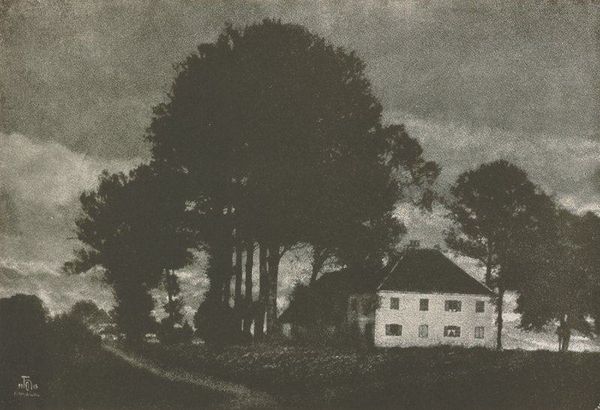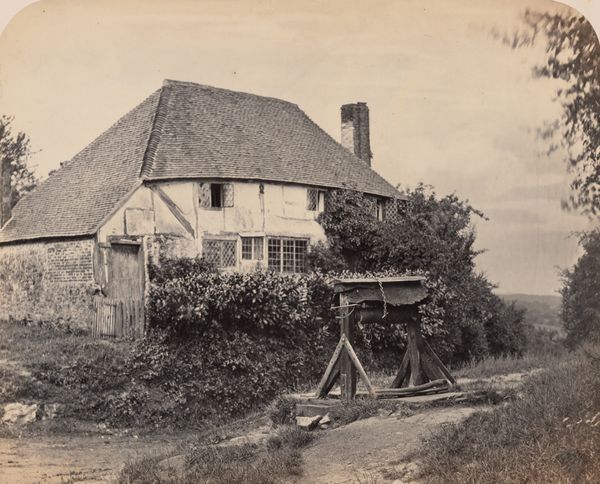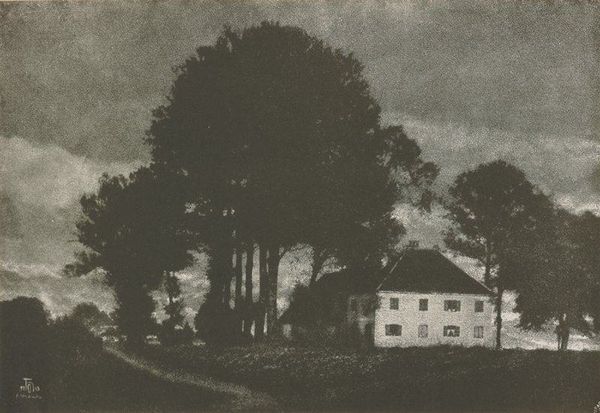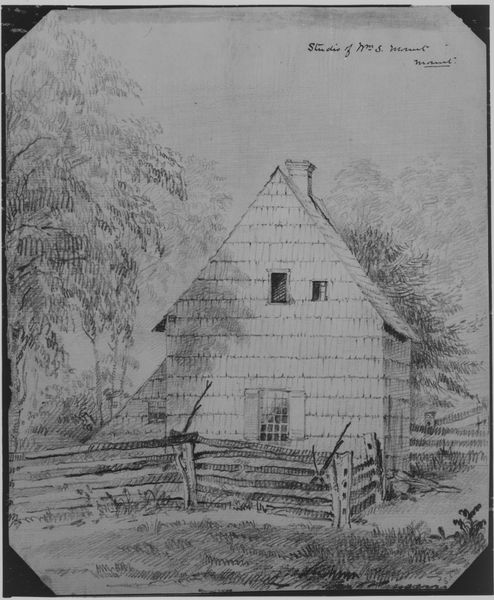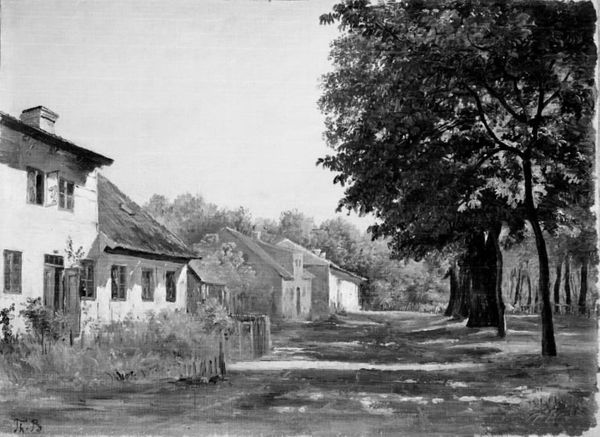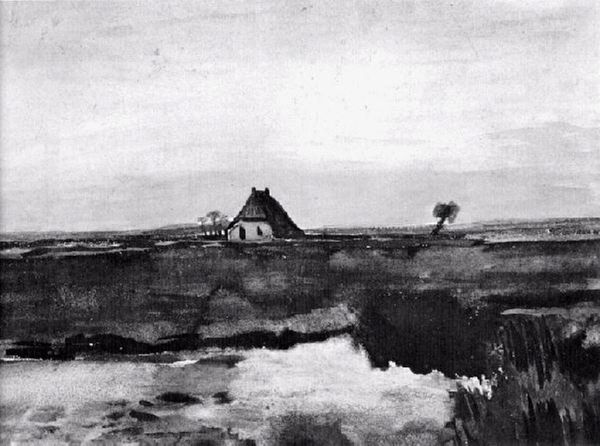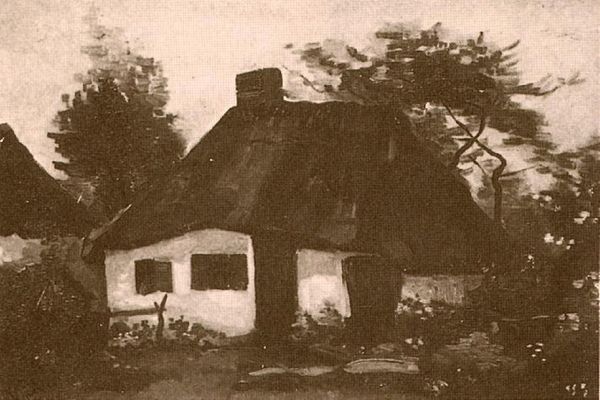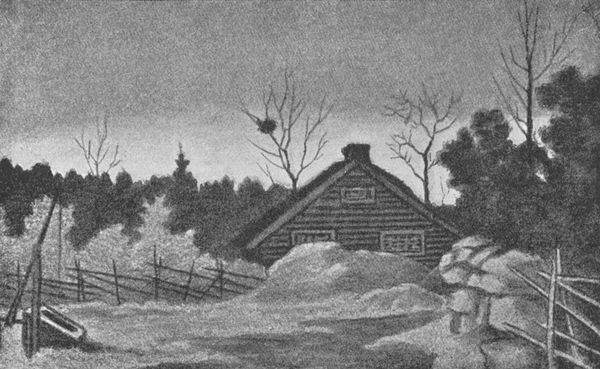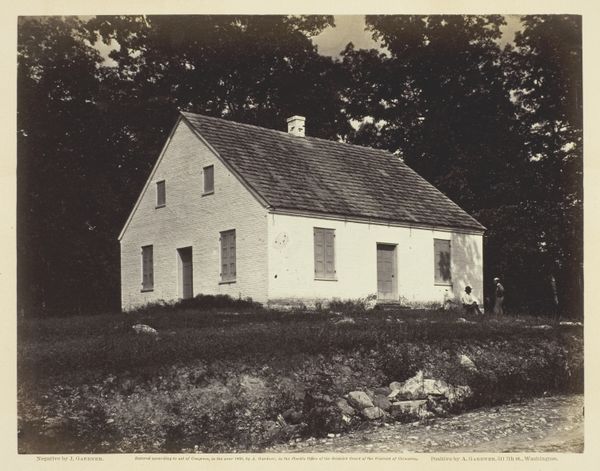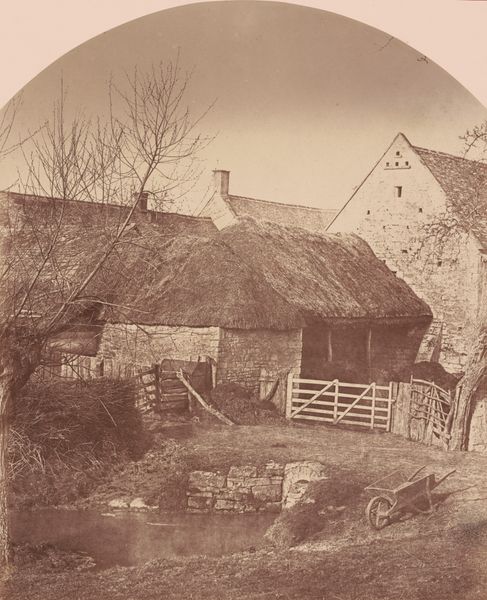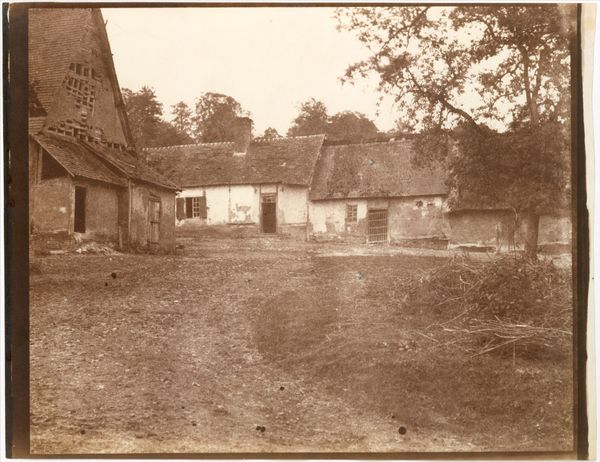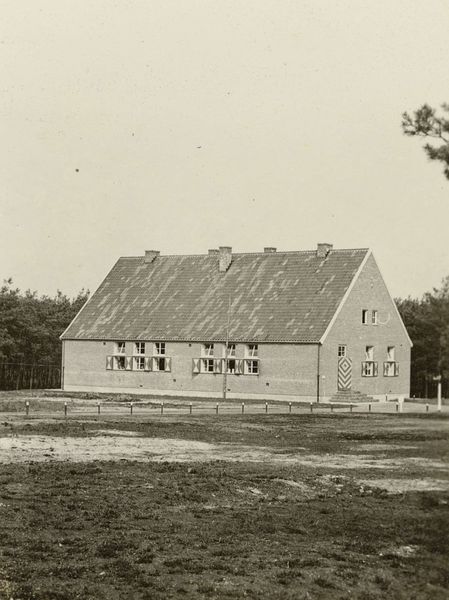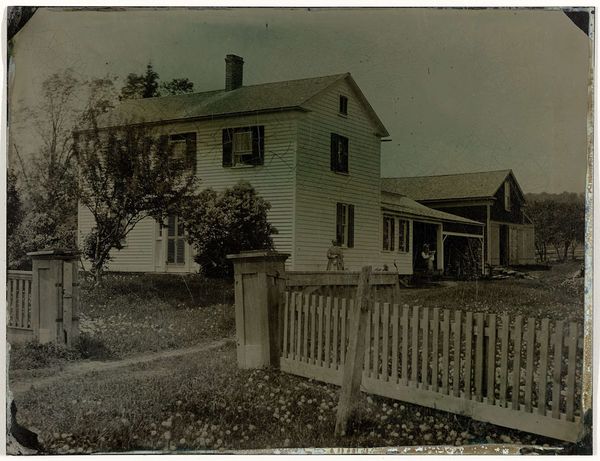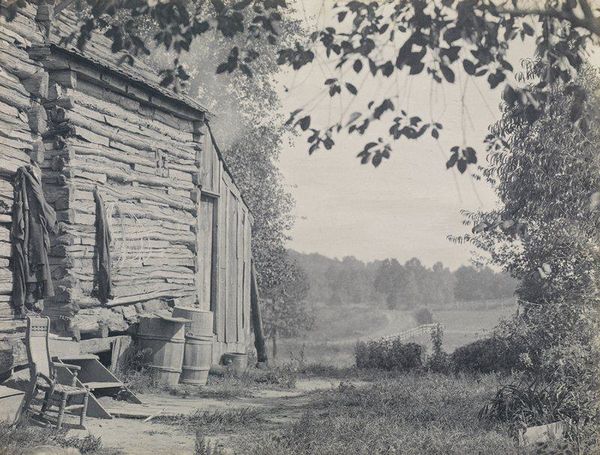
painting, oil-paint
#
painting
#
oil-paint
#
landscape
#
house
#
black and white
#
monochrome photography
#
monochrome
#
realism
#
building
#
monochrome
Copyright: Public domain
Curator: This subdued scene has a hushed quality. Is it a photograph? It almost feels like one. Editor: Indeed, it has that evocative timelessness. It’s a painting by Thomas Eakins titled *The Brinton House*, and was completed around 1878. What strikes me most is how much the materiality informs the image. The use of oil on canvas makes this seem a quiet testament to vernacular architecture. Curator: Right. The muted palette of blacks and whites emphasizes form and texture, don't you think? I mean, look at the subtle variations in tone that model the house; it creates depth. There's almost a minimalist aesthetic in how the composition forces us to concentrate on the humble beauty of the building itself, its presence as an object. Editor: The image does possess an intense degree of Realism. We're witnessing Eakins documenting his world in the moment. The seemingly mundane setting suddenly turns poignant because it acknowledges both this singular structure but also the historical and cultural conditions that made the house possible. Who occupied this dwelling? And how did it serve the community? Curator: You’re taking it to its social function immediately. Well, for me, I fixate on the labor involved in both building the house, in crafting the art. Look closely; Eakins likely made the house out of basic, rudimentary things that came straight out of the land itself. The painting itself speaks to that labor, with thick, tangible paint strokes making sure we can really grasp its shape and place. It is just so tangible, right? Editor: True, though it is worth acknowledging that Eakins painted this during an era grappling with immense industrial growth and profound societal changes. A work like *The Brinton House* represents not just a material presence, but also social commentary regarding how people are being sheltered, about roots and memory as well. Its existence in a museum shapes the audience's cultural perspective in many interesting ways. Curator: Interesting how you put it. By showcasing this almost simplistic structure and mode of existence in an age defined by rampant change, museums like this become agents in preserving a legacy connected intrinsically with the material aspects of everyday lives. Editor: Yes, precisely, both from a historic and social standpoint, which allows us to explore questions around memory, societal transformation and material awareness today!
Comments
No comments
Be the first to comment and join the conversation on the ultimate creative platform.
